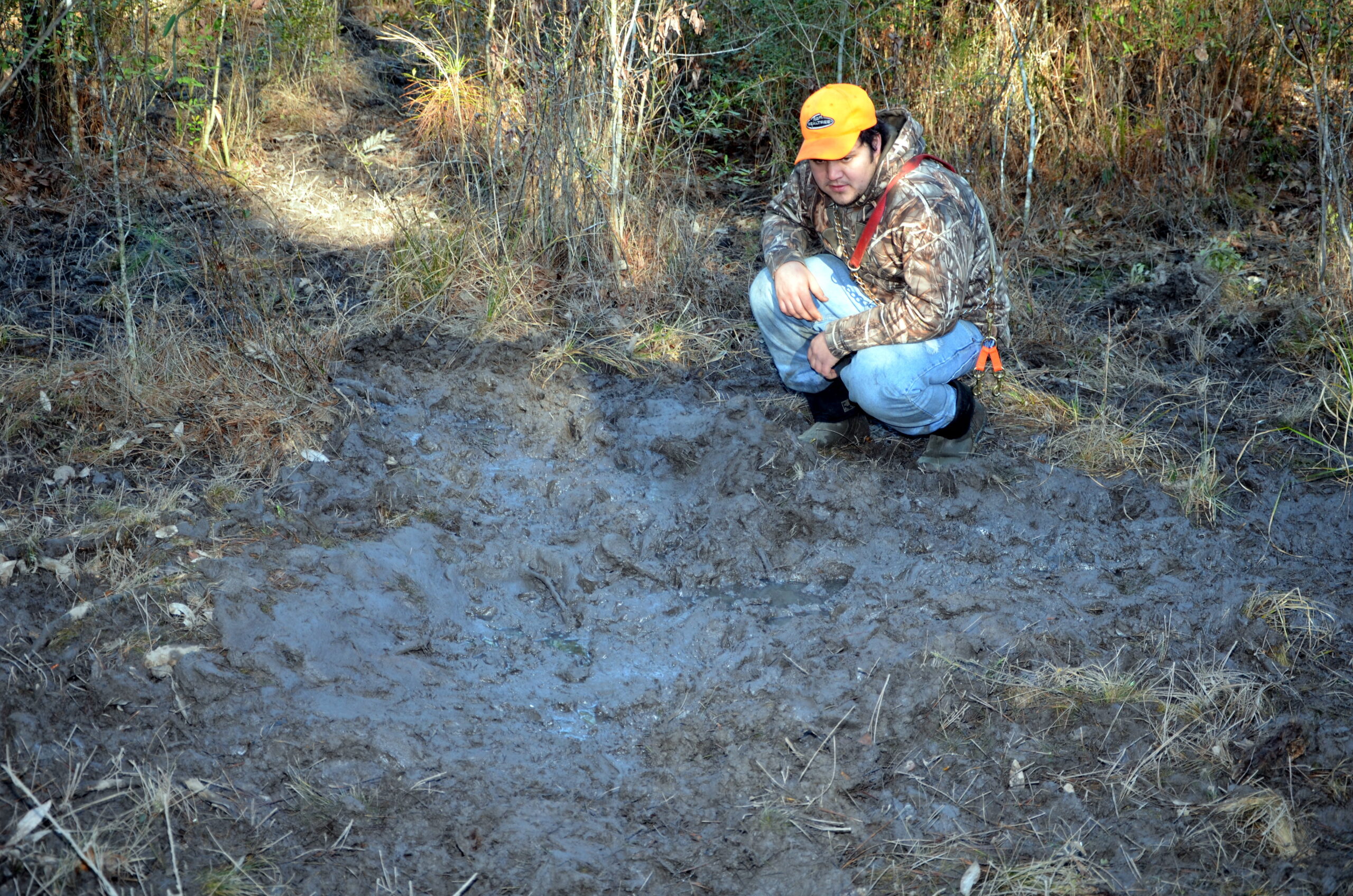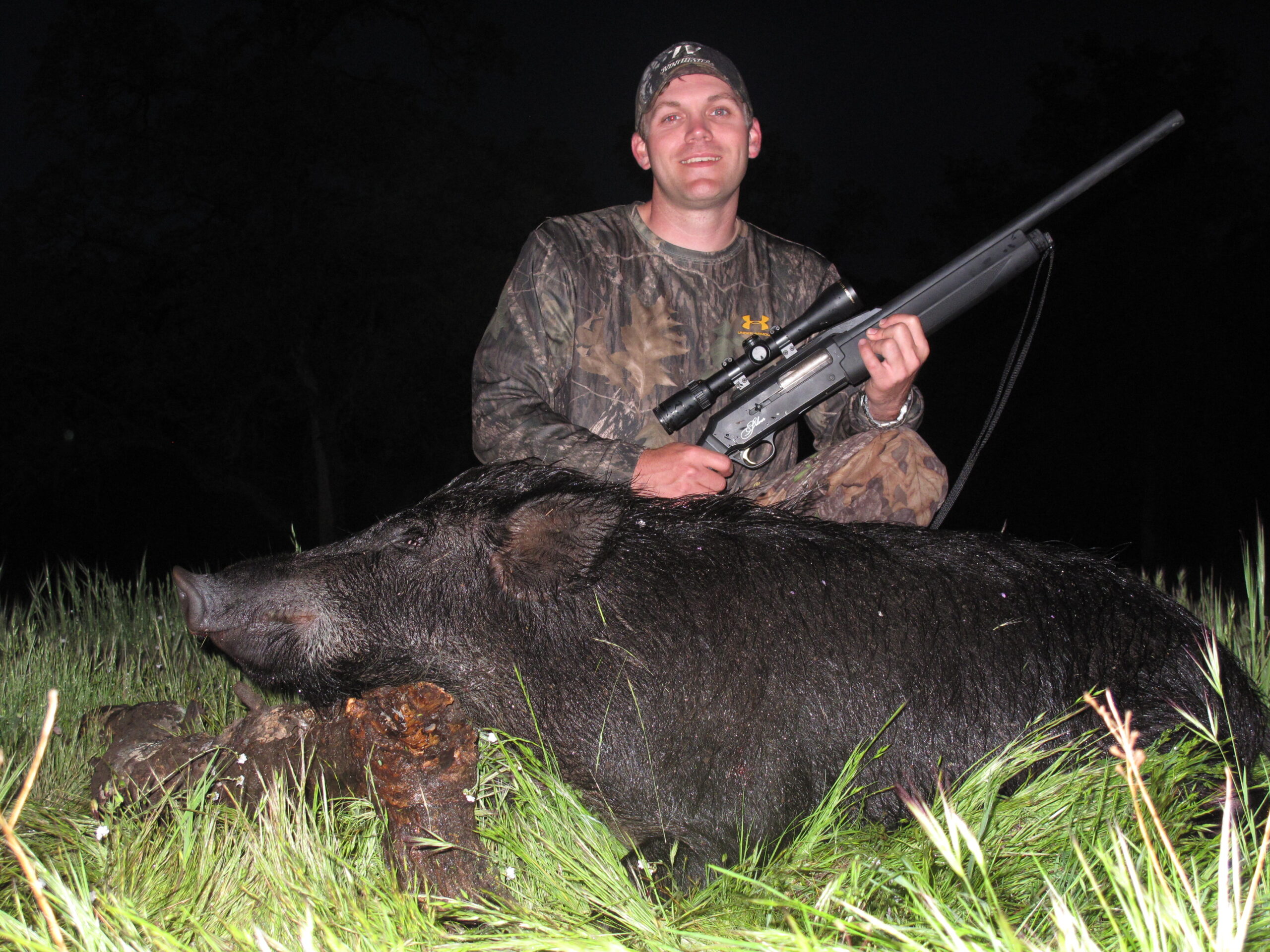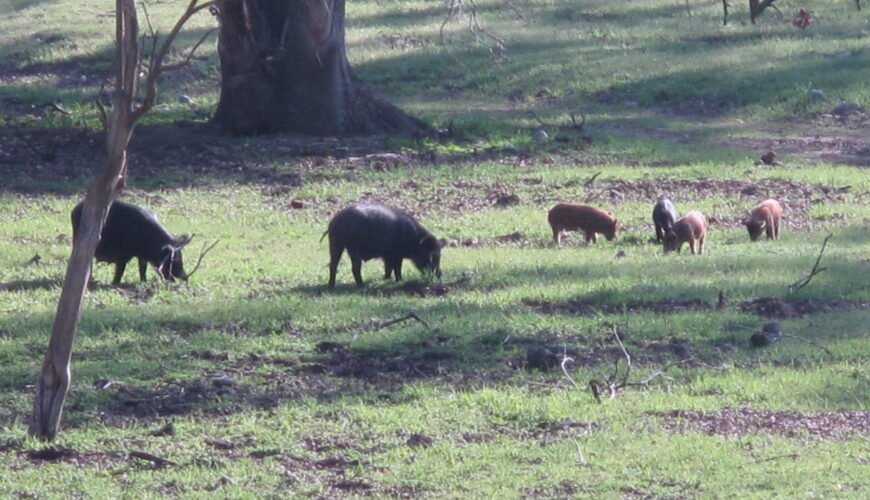Tactics
Squirrel Hunting is a Great Way to Pass on the Hunting Tradition
October 17, 2025 •John N. Felsher
May 2, 2025
Native to Eurasia, domestic swine first came to North America with European explorers, possibly as early as 1498. When the Spaniard Hernando de Soto landed near present-day Tampa, Fla. in 1539, he brought domestic pigs to feed his troops as the expedition wandered across what would become the southeastern United States. Inevitably, some swine escaped.
Highly adaptive, these pigs thrived and multiplied. Their descendants now number in the millions from Oklahoma to Virginia and Tennessee to the Gulf of Mexico. A western population spreads across California and parts of Oregon, Washington and Idaho. The highest pig populations occur in Texas, Florida, Louisiana and California.
“Hogs were domesticated for 9,000 years and bred for high reproductive rates,” explains2 Charlie Killmaster, a Georgia Department of Natural Resources biologist. “Hogs can exploit a much wider range of food sources than many other species.”
Hogs breed all year long. Sows reach sexual maturity in six months and produce two litters per year. By the time she drops her second litter, her daughters begin giving birth. Large predators occasionally snatch piglets. Alligators might grab a hog that ventures too close to the water, but few animals want to tangle with an adult pig.
Most states allow sportsmen to hunt feral swine all year with few or no regulations but always check before hunting anywhere. Follow these tips to put more pork in the freezer.
Bristling with razor sharp tusks and protected by a tough hide covering a thick shoulder “shield” of hardened scar tissue, a big boar makes a formidable adversary. While archers arrow pigs, most people use high-velocity rifles (.30-caliber or larger) or shotguns loaded with rifled slugs or 00 buckshot.

A big, wet Southern hog wallow. John N. Felsher Photo
Hogs wallow in muck to cool off and protect their skin from bugs or intense sunlight. Look for wallows in soft depressions. After leaving wallows, hogs commonly rub against trees, posts and other objects. Big boars also scar trees with their tusks.
Pigs thrive practically anywhere and eat almost anything. They like acorns, fruits, roots, mushrooms, insects, eggs, invertebrates and even carrion. If they can catch small animals like fawns, they eat them, too. They relish crops such as corn, peanuts and soybeans. Do the scouting to find food sources. When rooting for food, hogs can make an area look like someone roto-tilled it. “I look for areas that have been rooted up,” remarked Mike Tussey with Osceola Outdoors (239-253-5876, www.osceolaoutdoors.com) in Naples, Fla. “Sometimes, tree bottoms are caked in mud where the hogs rubbed against them.”
For the best hunting, head out in late winter or early spring before foliage grows too thick. At this time, food becomes scarce. Therefore, hogs move around more during daylight hours looking for something to eat. In warmer weather, hogs seek the thickest, lowest, wettest, muddiest cover they can find.

A shotgun loaded with slugs is an ideal choice for stalking hogs. Doug Howlett Photo
Most hunters probably kill hogs from deer stands, but people can stalk them. Head into the wind because their sensitive noses can pick up scents from long distances. Move slowly and deliberately without making any sudden movements or loud noises. Keep trees or other cover between the hunter and the pigs.
“Hogs are not that difficult to stalk,” advised Barry Estes with Alabama Hog Control (334-301-0179, www.alabamahogcontrol.com) in Prattville, Ala. “They aren’t as concerned with predators as deer and are usually more concerned with food. As long as hogs keep their noses to the ground, hunters can get close to them. If a hog raises its head, freeze.”
Hogs make considerable noise and sometimes respond to calls. Sows communicate with their piglets to keep them close and away from predators. Never squeal like a pig because that’s an alarm sound.
“I often call pigs,” Estes commented. “I use a low grunt call. When I come upon several pigs and drop the sow, I can frequently call the juveniles back while they search for the sow and safety.”
Many sportsmen run hogs with dogs. Chase dogs sniff out the pigs and start howling. When the hog turns to fight or finds itself cornered, send in the catch dog, usually a pit bull with an attitude. The catch dog grabs the hog’s ear, nose or other vital organs so hunters can kill it for food, castrate it so it grows fatter without breeding or fatten it up for later butchering.
“An adult hog doesn’t have many enemies in the woods,” Tussey stated. “Even with a catch dog, it’s still dangerous. I know people who were severely hurt by hogs. If the person or the dog lets go of the hog too soon and it gets up, you’re faced with a 250-pound boar full of teeth and tusks that’s extremely mad.”
Tired of poor shipboard rations, Europeans sailing to the New World centuries ago regularly released hogs on islands to provide a steady source of fresh meat. Sometimes, people were either marooned on those islands or survived a shipwreck. They killed hogs to survive and prepared the meat by hanging strips on wooden racks called “buccans” to slowly dry over fires. Dried and salted meat could last a long time without refrigeration.
People who prepared meat this way became known as “buccaneers.” The Spanish called dried meat “charque,” a corruption of a native word “ch’arki,” which means “to cut things into long strips” or “to dry meat.” This evolved into the English word “jerky.” When not chasing hogs or drying meat, many of these people raided passing ships, giving another meaning to the word buccaneer!
 John N. Felsher is a professional writer, broadcaster, photographer, editor and consultant. An avid sportsman, he’s written more than 4,000 articles for more than 176 different magazines on a wide variety of outdoors topics. He also hosts an outdoors tips show for WAVH FM Talk 106.5 radio station in Mobile, Ala. Contact him at j.felsher@hotmail.com or through Facebook.
John N. Felsher is a professional writer, broadcaster, photographer, editor and consultant. An avid sportsman, he’s written more than 4,000 articles for more than 176 different magazines on a wide variety of outdoors topics. He also hosts an outdoors tips show for WAVH FM Talk 106.5 radio station in Mobile, Ala. Contact him at j.felsher@hotmail.com or through Facebook.
